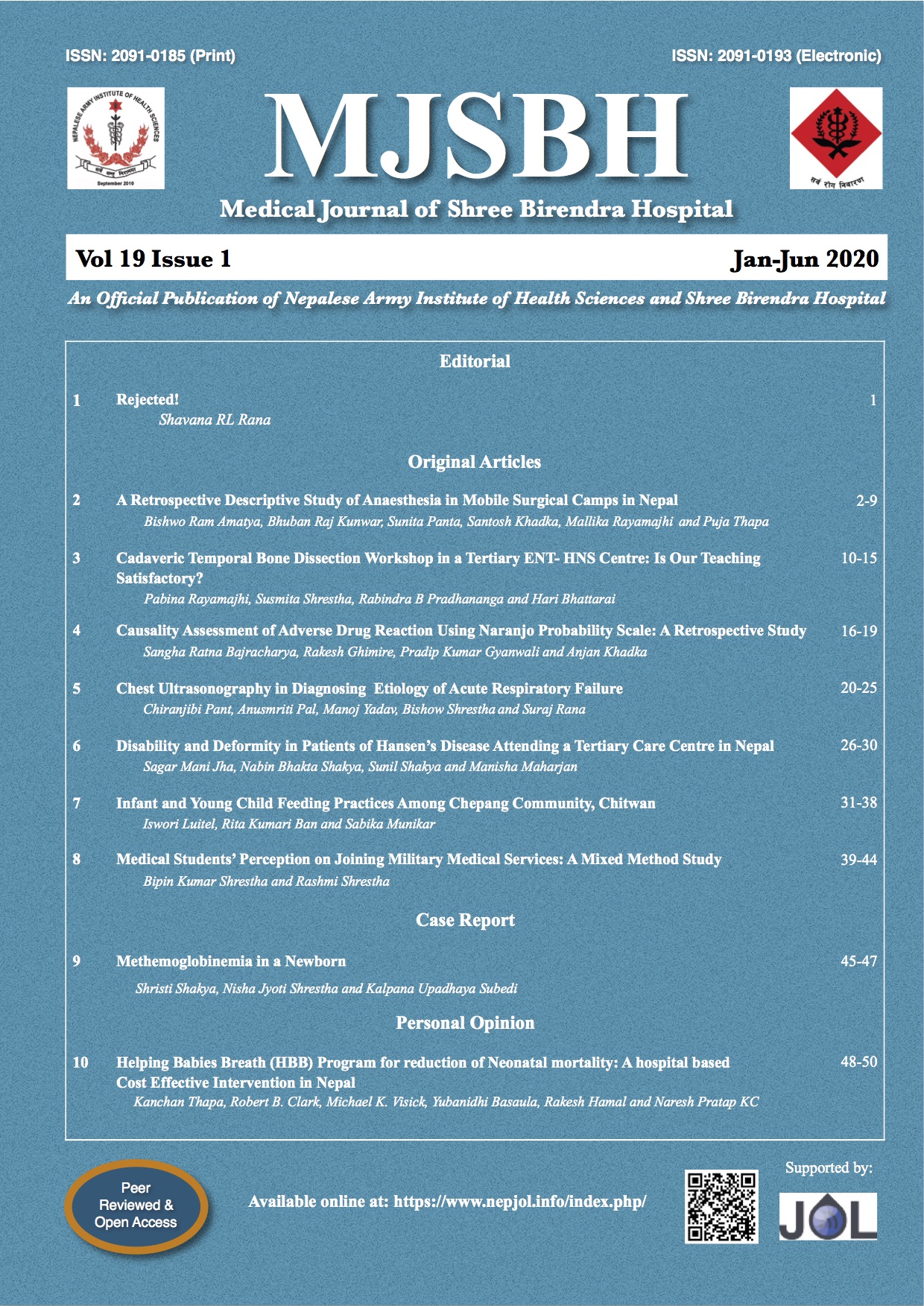Disability and Deformity in Patients of Hansen’s Disease Attending a Tertiary Care Center in Nepal
Keywords:
Leprosy, Nerve, SpectrumAbstract
Introduction: Leprosy is responsible for disability and deformity among patients. Nerve damage is one of the main features of leprosy and it is the main cause of disability in the patients. Developing deformity leads to restriction in professional work and hence reduced income as well as it also acts adversely on social wellbeing. The aim of this study was to study the spectrum of Grade 2 disability among all leprosy patients attending outpatient and inpatient according to WHO grading and to find the association with Ridley Joplingclassification.
Methods: It was an observational cross sectional hospital based study. All the inpatients and outpatients of leprosy getting treatment and were on follow up in the Department of Dermatology between December 2017 to November 2019 were included. Details of disability and deformity were recorded and were Classified as per WHO grading and Ridley Jopling classification. Cross tab was used in descriptive analysis to compare between different variables and data was analysed in percentage.
Results: A total of 88 patients were included in the study. Maximum number of patients 41 (46.7%) belonged to 30 to 50 years of age group. Various degrees of loss of sensation was seen in all patients and total number of patients with Grade 1 disability were 68 (77.3%) and Grade 2 disability were 20 (22.7%). Maximum number of patients 11 (12.5%) with Grade 2 disability was seen in Lepromatous Leprosy.
Conclusions: Disability and deformity can occur in any spectrum of disease and intervention as early as possible will help reduce the incidence.
Downloads
Downloads
Published
How to Cite
Issue
Section
License
This license enables reusers to distribute, remix, adapt, and build upon the material in any medium or format for noncommercial purposes only, and only so long as attribution is given to the creator.




